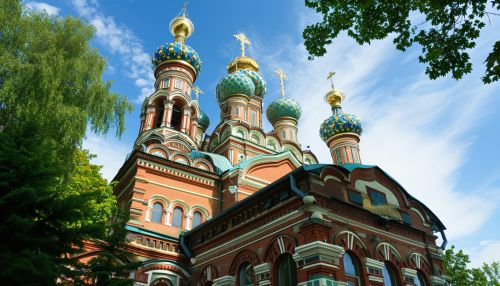Russian Orthodox Church
History
The Russian Orthodox Church (ROC), also known as the Moscow Patriarchate, is one of the autocephalous Eastern Orthodox churches. The ROC traces its origins to the Christian community established in Kiev in the 10th century, following the Christianization of Kievan Rus' by Saint Vladimir of Kiev in 988.


The ROC became a major force in the political and cultural life of Russia after the Mongol invasion of Rus' in the 13th century. The church enjoyed the patronage of the Russian princes and later the Tsars, who saw it as an instrument of state power and a unifying force for the Russian people.
The ROC underwent significant changes in the 17th century during the reign of Patriarch Nikon, who sought to bring the Russian Orthodox rites in line with the Greek ones. This led to a schism, known as the Old Believer Schism, which resulted in a significant portion of the faithful separating from the ROC.
The ROC suffered greatly during the Soviet period, with many of its churches and monasteries closed or destroyed, and its clergy and faithful persecuted. However, it was officially recognized by the Soviet state in 1943, and it regained some of its influence in the post-Stalin era.
Since the fall of the Soviet Union, the ROC has experienced a significant revival, with many of its churches and monasteries restored and reopened, and its influence in Russian society growing.
Doctrine and Theology
The ROC adheres to the Nicene Creed, the decisions of the Seven Ecumenical Councils, and the tradition of the Eastern Orthodox Church. Its theology is based on Holy Scripture and Holy Tradition, which includes the writings of the Church Fathers, the liturgy, and the canons of the Ecumenical Councils.
The ROC believes in the Holy Trinity, the Incarnation of the Son of God, the Resurrection of Christ, and the future Second Coming. It practices the sacraments of Baptism, Chrismation, Eucharist, Confession, Ordination, Marriage, and Anointing of the Sick.
The ROC has a rich liturgical tradition, with the Divine Liturgy of St. John Chrysostom and the Divine Liturgy of St. Basil the Great being the most commonly celebrated services. The church calendar follows the Julian Calendar, which is 13 days behind the Gregorian Calendar used in the West.
Organization and Structure
The ROC is headed by the Patriarch of Moscow and all Rus', who is elected by the Local Council of the ROC. The current Patriarch is Kirill I, who was elected in 2009.
The ROC is divided into eparchies, each headed by a bishop. The bishops are assisted by priests and deacons. Monasticism is a significant part of the ROC, with monks and nuns living in monasteries and convents throughout Russia.
The ROC is a member of the Eastern Orthodox Communion, which is a fellowship of autocephalous churches that are in communion with each other. The ROC is also a member of the World Council of Churches and the Conference of European Churches.
Influence and Role in Society
The ROC plays a significant role in Russian society. It is involved in education, social services, and charity work. It also has a significant influence on Russian culture, with its traditions and rituals deeply ingrained in the Russian psyche.
The ROC has been a vocal critic of secularism and moral relativism, and it has advocated for the protection of Christian values in Russian society. It has also been involved in interfaith dialogue and peacemaking efforts, both in Russia and abroad.
